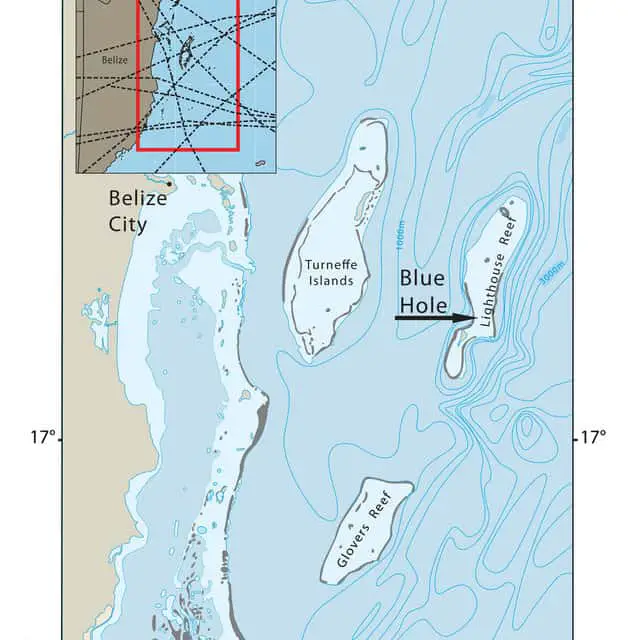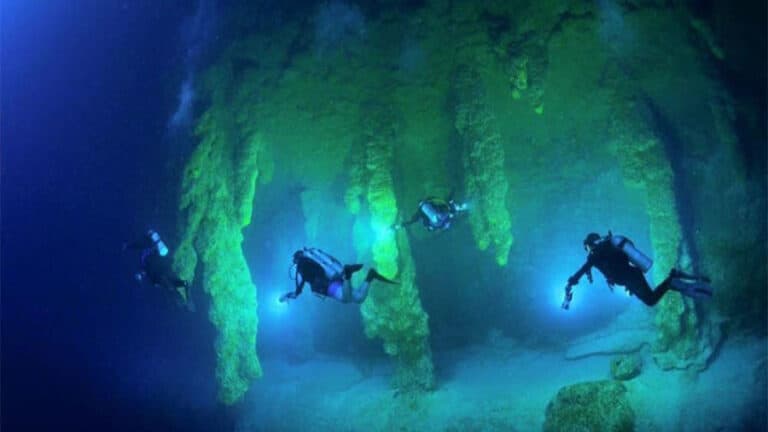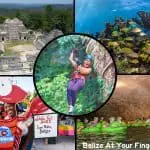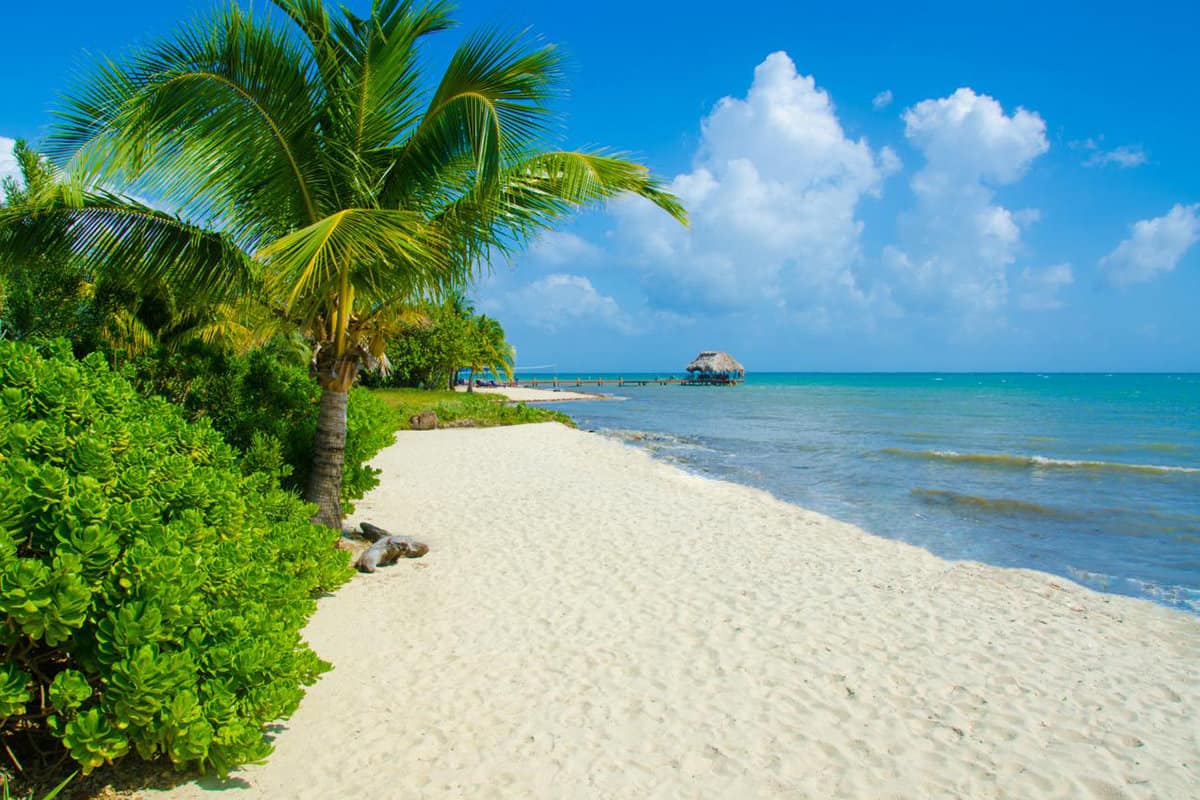It’s no secret that Belize is home to some of the world’s most beautiful beaches. But did you know that its waters hold more wonders than fine sand, sapphire waters, and rich marine wildlife?
In fact, the Great Blue Hole, or simply the Blue Hole, can be found in the country.
The Great Blue Hole in Belize is a giant sinkhole surrounded by an almost perfect ring of corals, and you can find it on the Lighthouse Reef on the Caribbean Sea, 70 km (44 mi) from Belize City. The Blue Hole is an iconic diving spot that has drawn the attention of explorers and scientists.
This astounding natural wonder is as mysterious as it is breathtakingly beautiful. In the rest of this article, we will learn more about Belize’s Great Blue Hole and discuss some facts you might not know.
Get To Know Belize’s Great Blue Hole
From an aerial view, the spectacular Blue Hole just a little off the coast of Belize already inspires awe. Its near-perfect ring of corals that circle its opening to deep blue and sapphire waters make it a thing of beauty but also something that inspires fear.
It’s known to many that the sinkhole is deep; if you’re not an experienced and confident scuba diver, you probably should stick to admiring it from afar. In other words, it’s not for those looking for casual fun. Going into the Blue Hole can be extremely dangerous.
And if that’s not something true about nature at its best—this vast and mighty life force that surrounds us—we don’t know what is.
Now let’s find out more about the Great Blue Hole in Belize.
The Discovery of the Blue Hole
Before it became a famous diving spot, the Blue Hole was already well-known among the Belizean locals and fishermen. Historians suggest that Spanish explorers were first to the scene, but no one knows what they first called the place. Unfortunately, no records remain of what they called the Blue Hole back then, and only a few knew of its existence.
It was not until 1971 that the site started to gain attention when French ocean explorer, documentarian, and marine biologist Jacques Cousteau began to explore the area. He brought his ship Calypso to the Caribbean Sea, exploring the massive sinkhole on the Lighthouse Reef atoll that formed part of the Belize Barrier Reef.
Cousteau documented his exploration, during which he discovered stalactites inside the sinkhole. These formations proved that the vast sinkhole was an extensive cave system before sea levels rose to submerge it underwater.
Upon exploration of the marine sinkhole, Cousteau named it one of the best diving spots in the world, bringing it to worldwide attention. Since then, several recreational divers, scientists, and marine experts have come to the Blue Hole to experience its beauty and mystery.
In 1996, the Belize Barrier Reef System, which includes the Blue Hole Natural Monument and six other sites, was declared a UNESCO World Heritage Site. It is also the most extensive barrier reef system in the northern hemisphere and is home to endangered marine species and different types of reefs.

How the Blue Hole Got Its Name
Jacques Cousteau explored the Blue Hole in 1971, and up until then, no official name existed. It was simply called a large marine sinkhole off the coast of Belize. And then came a British professional diver by the name of Ned Middleton.
In 1988, Middleton wrote a book about his life as a diver entitled “Ten Years Underwater.” In the book, he coined the term “Belize Blue Hole” to refer to the massive sinkhole found on the Lighthouse Reef atoll. The name stuck, and the sinkhole has been called the Blue Hole or the Great Blue Hole ever since.
How To Reach the Blue Hole
There are two main ways to reach the iconic Belize Blue Hole: a day diving tour from Ambergris Caye or Placencia in southern Belize. These boat trips can take three to four hours, and the ride can be pretty bumpy.
The boat trips are also very dependent on the weather, so expect boat operators and divers not to push through if the weather is less than clear, blue skies. And this is for your own good, so if that happens to you, just be patient and hope that the weather clears up in the coming days.
When you reach the Lighthouse Reef atoll and the Blue Hole, you can go snorkeling, diving, and swimming, as long as a certified tour operator accompanies you.
If you’re not up for the water activities at the Blue Hole, you can still enjoy the incredible view by taking an aerial tour. The giant sinkhole is impressive even from above, but we can’t guarantee that you won’t regret not going diving when you’re looking at the beauty of the Blue Hole from the air.
The Blue Hole Dimensions
The Great Belize Blue Hole is a massive site—with a diameter of 984 feet (299m) and a depth of 410 feet (124m). This staggering depth has been the lure for many divers to attempt to descend its depths with deadly consequences.
This giant underwater sinkhole is part of a coral reef with its opening perfectly encircled by corals. This unique formation gives its entrance ring a lighter color from the deep blue color of the water in its center.
In 2012, this natural wonder was also named by Discovery Channel the Most Amazing Place on Earth.
Requirements for Diving the Blue Hole

The Great Blue Hole may be enchanting, but it is not a destination for everyone. The sinkhole is considered dangerous mainly because of its depth and structure, which makes for poor water circulation and deficient oxygen levels.
Inexperienced divers often make the fatal mistake of underestimating the sinkhole’s depth and unique (read: sometimes suffocating) internal structure, which may cause people to panic, leading to fatal accidents.
In fact, the Blue Hole may be over 400 feet (121m) deep, but even when you’re far from the bottom at just 90 feet deep, you will already witness that very little life can survive in the sinkhole’s mysterious interior.
At this depth, oxygen starts to dwindle sharply due to a thick layer of a chemical called hydrogen sulfide.
Hydrogen sulfide is a dense, colorless gas that is toxic and flammable. This layer of hydrogen sulfide can be found up to a depth of 300 feet, covering the entire width of the sinkhole. And evidence of just how toxic this chemical is?
Underneath this blanket of poisonous gas is what appears to be the deathbed of different kinds of conches and hermit crabs.
Aside from the depth, structure, and toxic gas inside the sinkhole, one may also find sharks in these waters.
Because of these dangers, only experienced divers who have completed at least 24 dives can attempt this dangerous dive. For your safety, do not attempt to go diving in the Blue Hole if you are not a confident diver.
Things You Probably Didn’t Know About the Blue Hole
The Great Blue Hole of Belize is as majestic as it is mysterious. The Blue Hole’s depths hold many secrets, some of which have come to light, thanks to a few intrepid explorers.
The Blue Hole Used To Be a Large Cave

Back in 1971, when Jacques Cousteau explored the Belize Blue Hole, he discovered stalactites inside the sinkhole, concluding that it had been a large cave that had existed before rising sea levels filled the cave with water.
A more recent expedition in 2018 by a crew from Aquatica Submarines explored the depths of the Blue Hole once more, going deeper than most divers ever dared: to the bottom of the giant sinkhole. On the crew’s way to the bottom at a depth of around 120 feet (37 meters), they found what Cousteau reported he found many years before—stalactites.
Experts say that stalactites could only have formed in the sinkhole if it had been a sizable dry area such as a cave where water was dripping down to the limestone floor. Scientists believe the sinkhole was a cave formed during the last ice age, which ended about 10,000 to 14,000 years ago.
When the last ice age ended, sea levels rose, filling cavities like this ancient cave with water and causing it to collapse.
There Is No Life at the Bottom of the Blue Hole
Thanks to a generous helping of hydrogen sulfide near the bottom of the sinkhole, there is no oxygen at the bottom, and hence no life exists. Instead, what you will find there are remains of marine animals like crabs and conches that may have fallen into the sinkhole, suffocating from the lack of oxygen and eventually dying.
The layer of hydrogen sulfide creates a very thick fog, and as you near it towards the bottom, the water becomes murkier and murkier. And when you finally reach the floor, everything is dark. There is no hint of life anywhere at the bottom.
Many local myths and legends say that frightful sea monsters are at the bottom of the Great Blue Hole. And when some explorers who resurfaced from the deep claimed to have seen tracks at the bottom of the Blue Hole, many believed them to be proof that there were indeed dreadful sea creatures that lurked in the dark corners of the mysterious sinkhole.
However, until scientific evidence proves otherwise, these tracks are most probably simply marks left behind by small marine creatures like crabs and conches. Or perhaps on a more sinister note, the tracks are from divers that had fallen in—struggling to survive the deathly environment of the sinkhole’s bottom.
Explorers Found the Bodies of Lost Divers in the Blue Hole
While there are no monsters in the depths of the Belize Blue Hole, a team of explorers has indeed made an unfortunate discovery: the bodies of two divers who had long been missing. The explorers who found the corpses also found crisscrossing tracks at the bottom, which the fated divers may have created in their desperate struggles to escape their watery grave.
Unfortunately, the bottom of the Blue Hole is a very harsh environment, where if you run out of oxygen or do not know your surroundings well, you have very little chance of returning to the surface.
The thick chemical fog a little above the bottom makes vision past it very difficult. If you did not have the appropriate equipment, you would be unable to differentiate top from bottom.
Though the explorers notified the authorities about the discovery of the two corpses, the team decided to leave the bodies at the bottom, not wanting to disturb them and thinking they were “at peace” where they lay.
We don’t know how many have died in the Blue Hole, but three divers have been reported missing over the years, two of whom were the above divers found by explorers in 2018.
Explorers Found Plastic Trash in the Sinkhole
The heartbreaking discovery of the divers’ corpses is sad enough. Unfortunately, explorers made another unhappy discovery. Explorers have recently discovered traces of pollution have settled on the bottom of the Blue Hole. This discovery is very disappointing, given that the site is a protected area, and divers who go there are responsible for keeping the waters pristine.
So what did the explorers find? A bottle of Coca-Cola. Yep. For some reason, this plastic bottle made its way into the bottom. Something caused by irresponsible divers? Or waste washed off into the sinkhole’s depths. Whatever the cause, it’s sad to know that pollution has tarnished the pristine waters of this UNESCO World Heritage Site.
Aside from the Coca-Cola bottle, explorers also found a GoPro camera with recorded vacation footage intact.
What Other Adventure Activities Can Visitors Expect in Belize Besides Exploring the Great Blue Hole?
Aside from exploring the Great Blue Hole, visitors to Belize can also experience thrilling adventure activities like zip-lining through the jungle, exploring ancient Mayan ruins, and cave tubing in Belize pricing for a unique underground adventure. These activities offer an exciting and memorable way to explore the natural beauty of Belize.
Final Thoughts
Nature sure reminds us that humans are little specks in the grand scheme of things.
And the Belize Blue Hole is just one majestic wonder on our amazing planet. If you wish to explore the beauty of this natural wonder, be sure to find a suitable guide to keep you from the potential dangers.
Here are some great Belize Travel Tips to check out!





